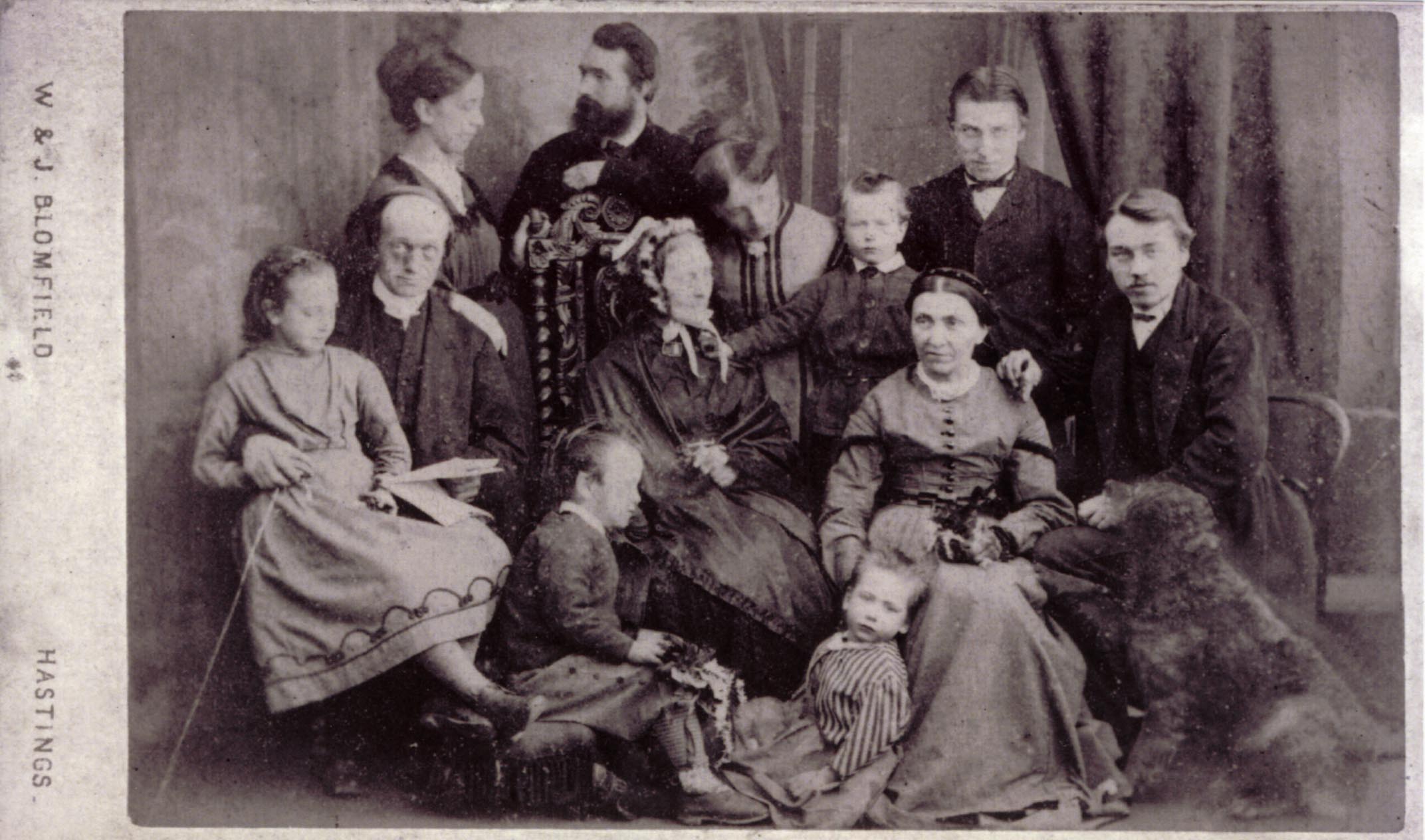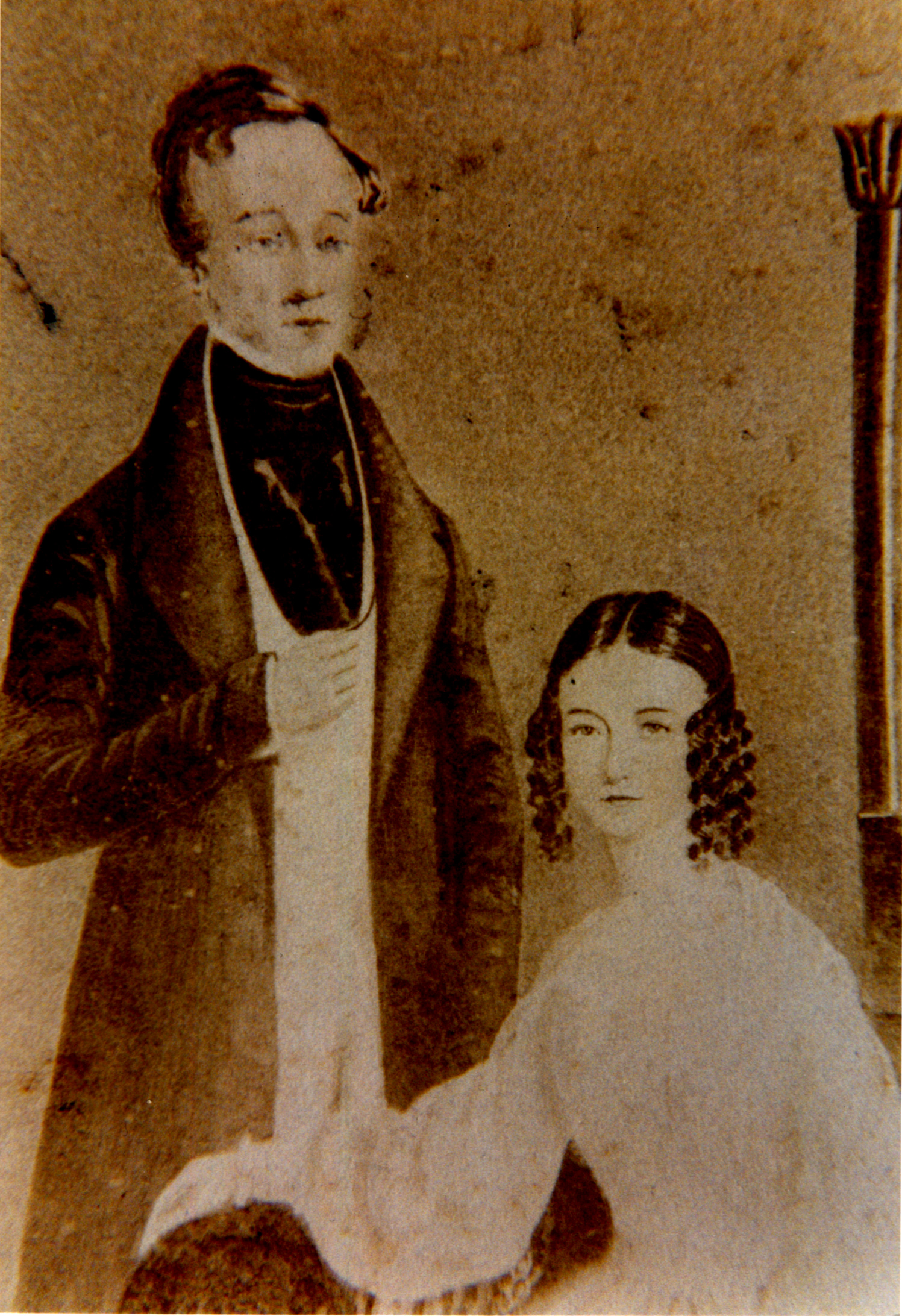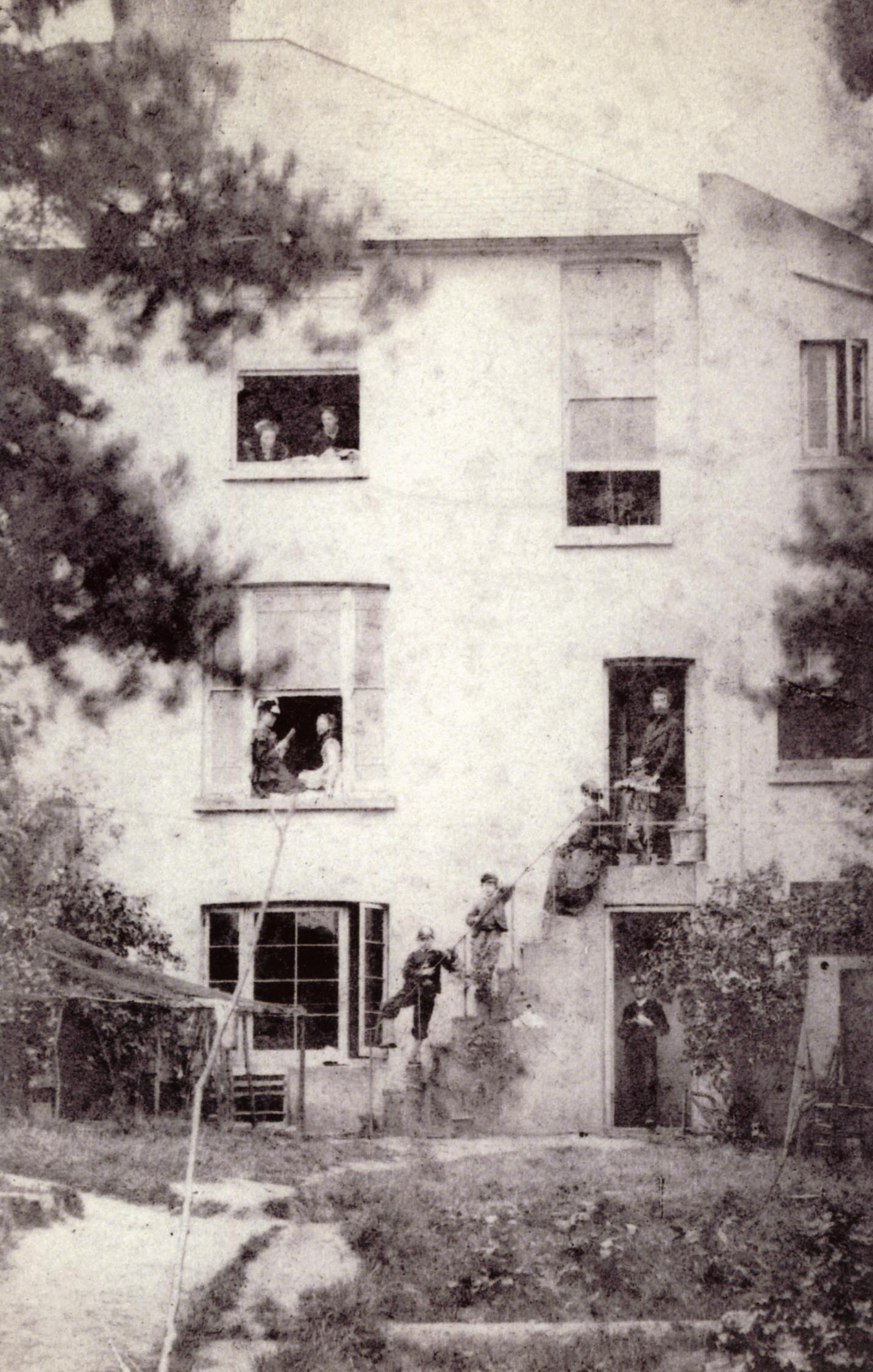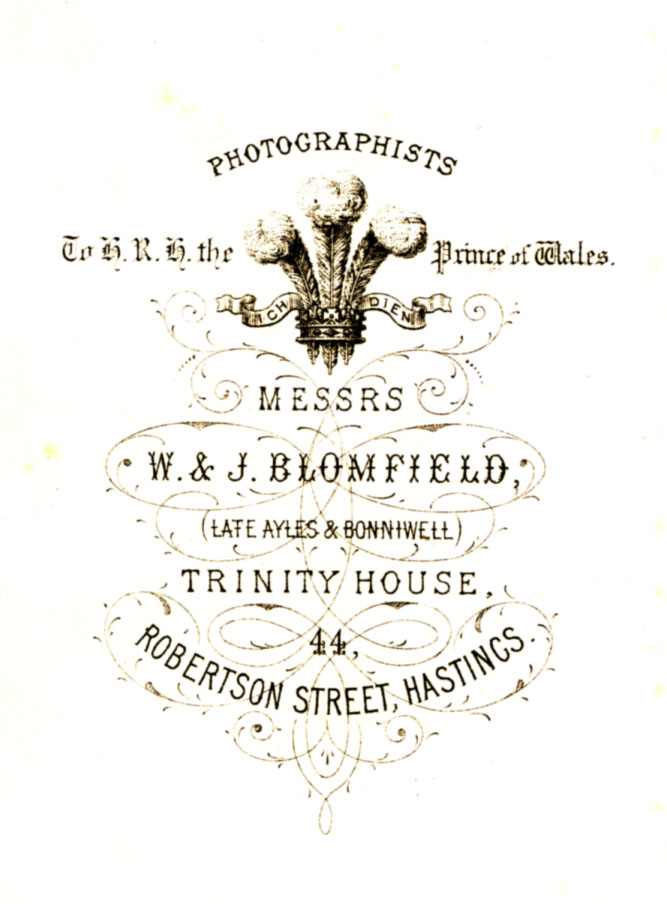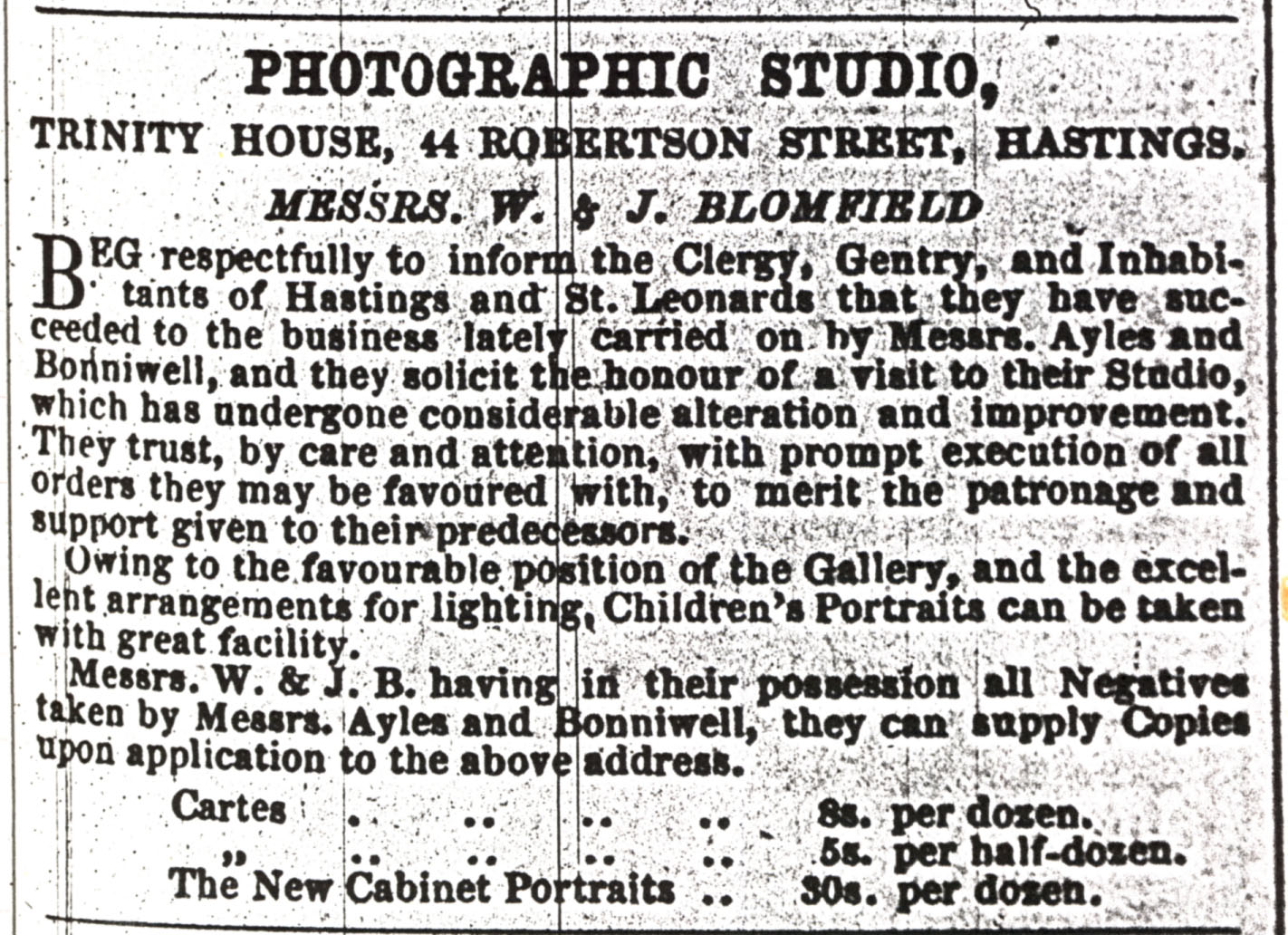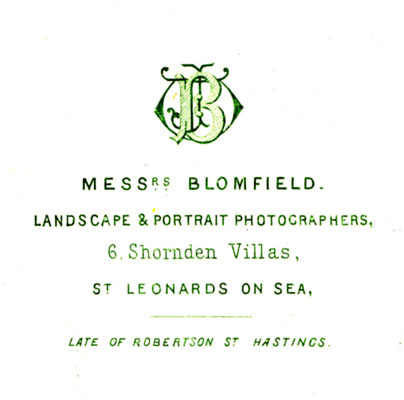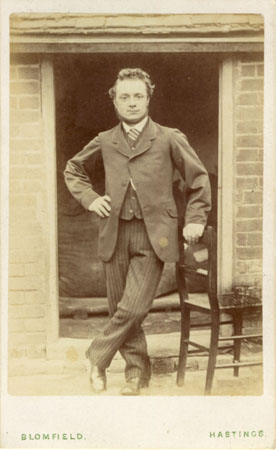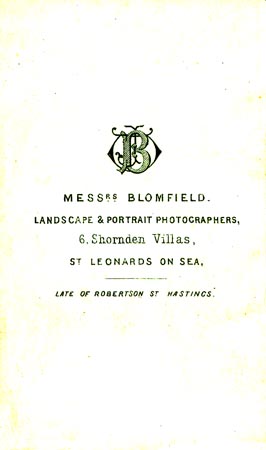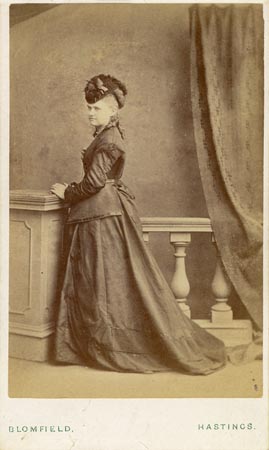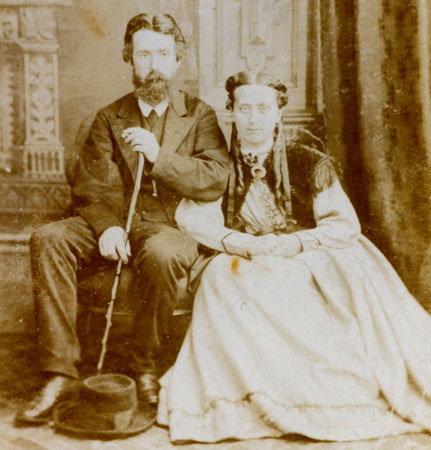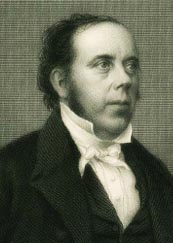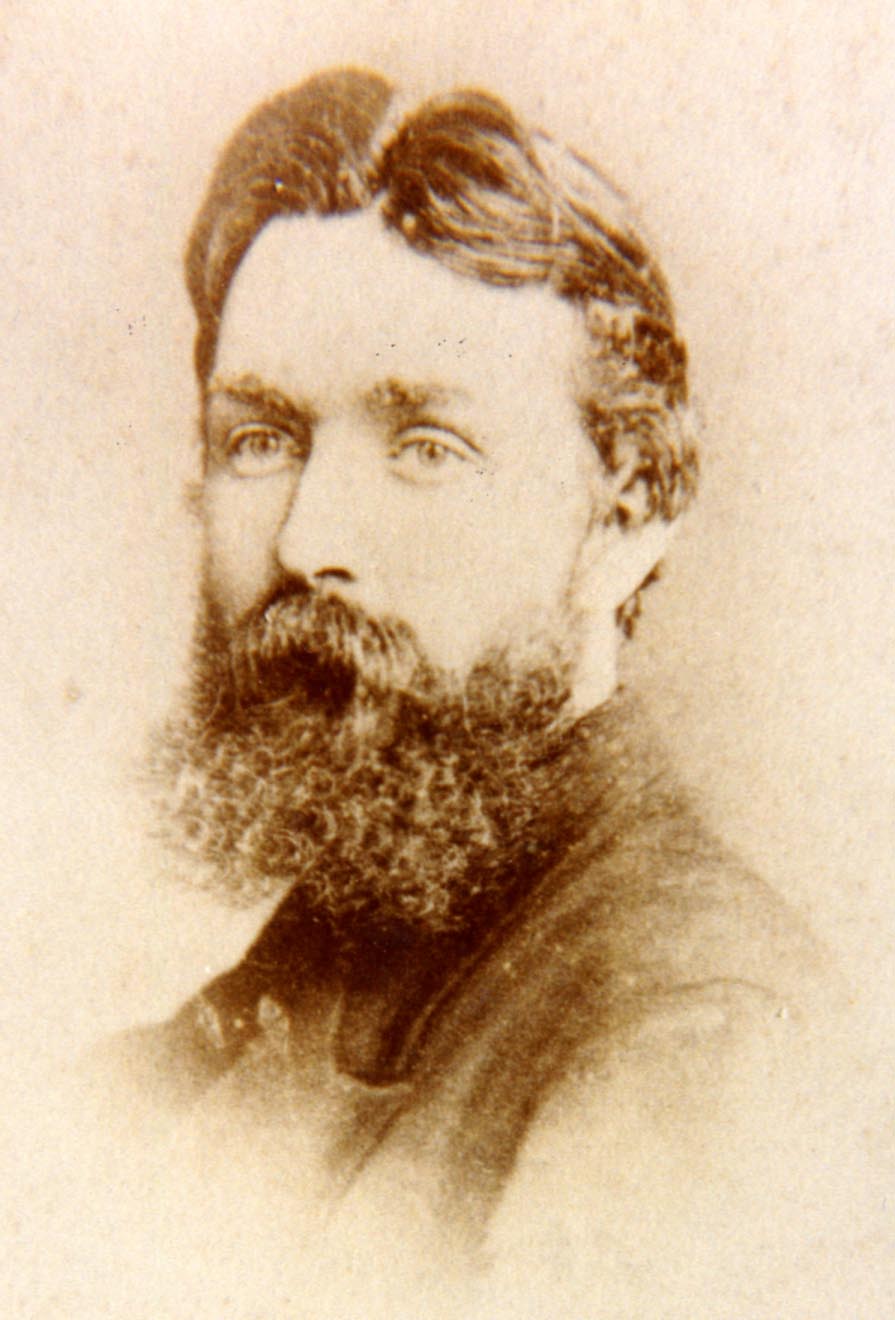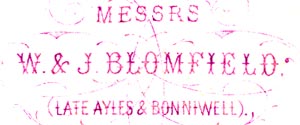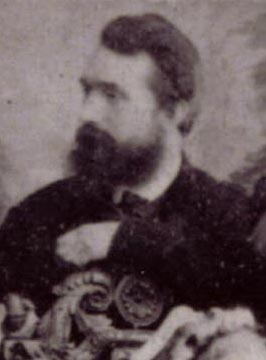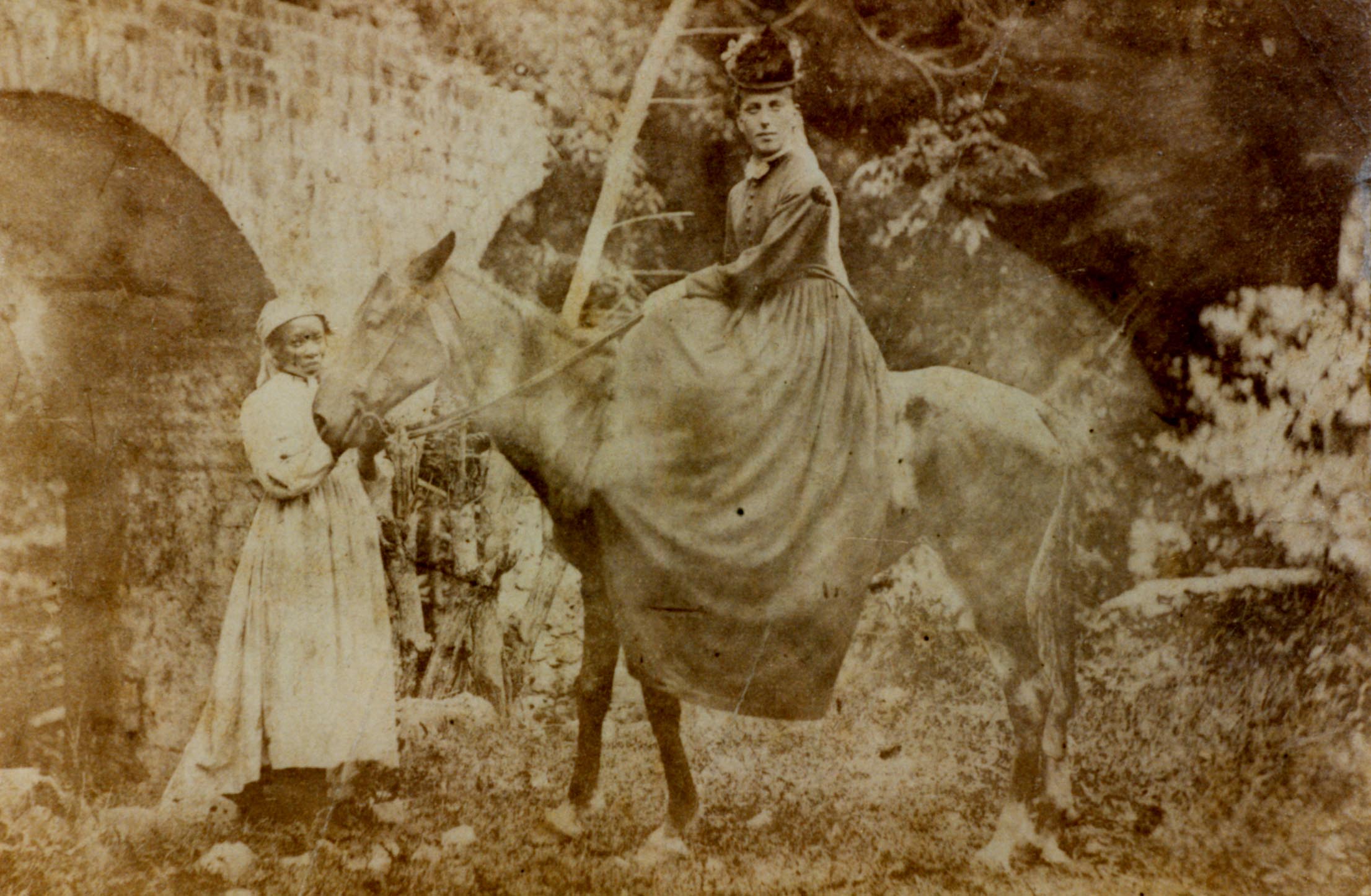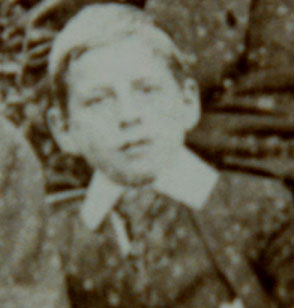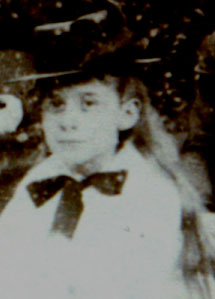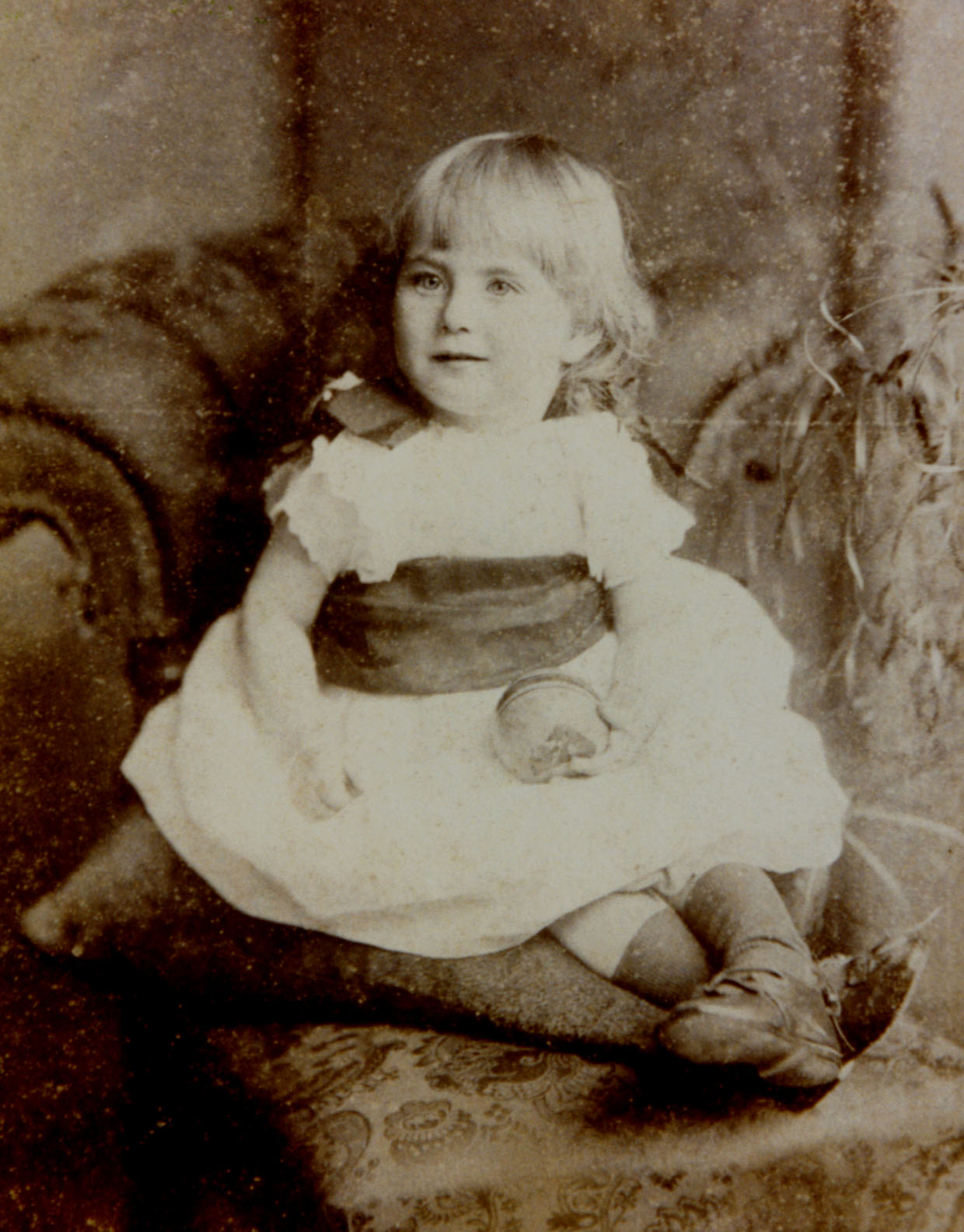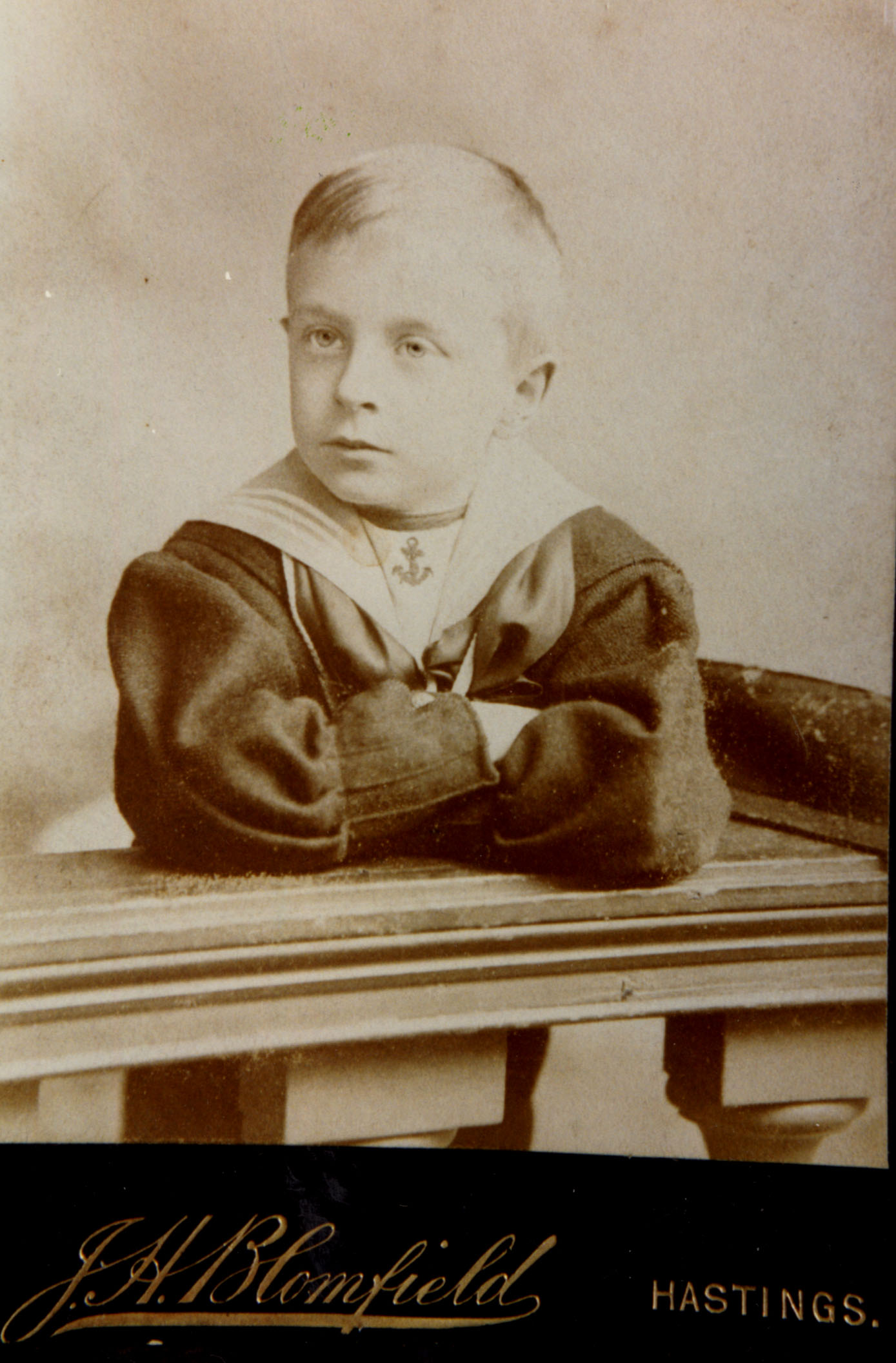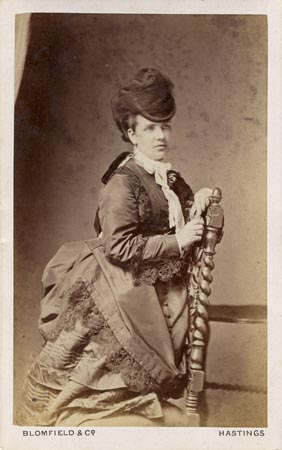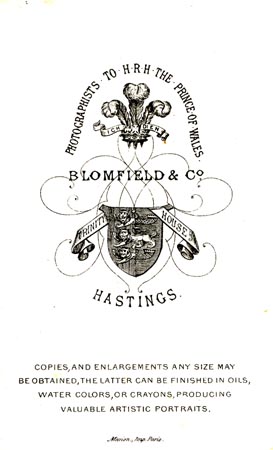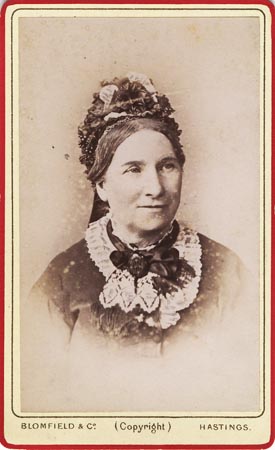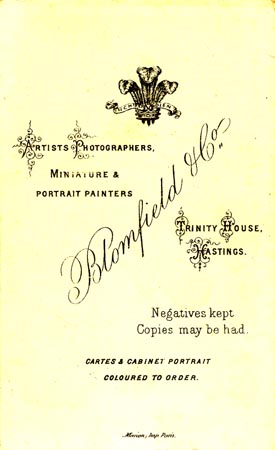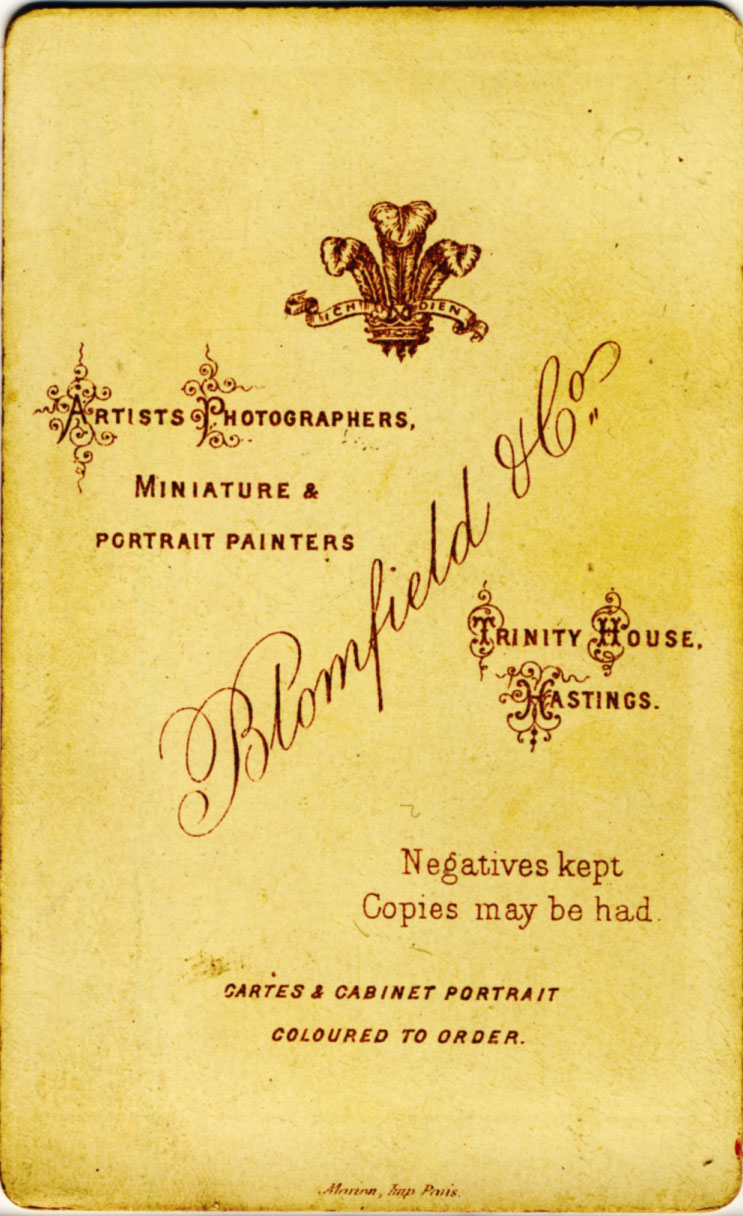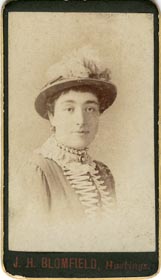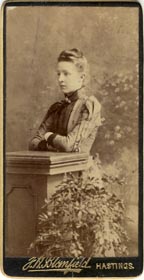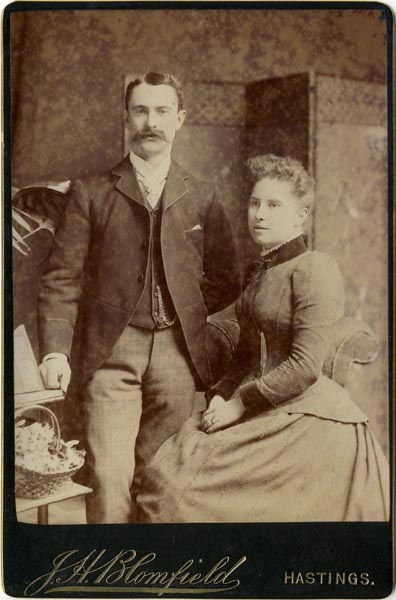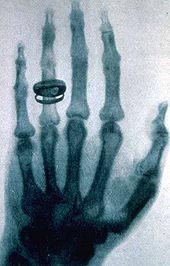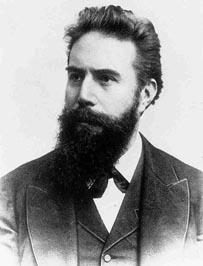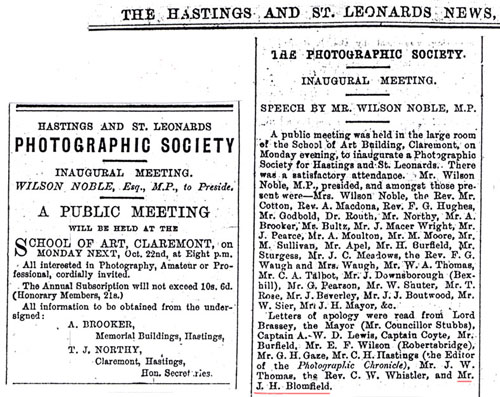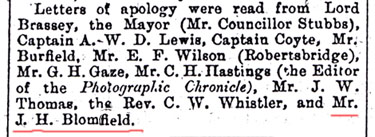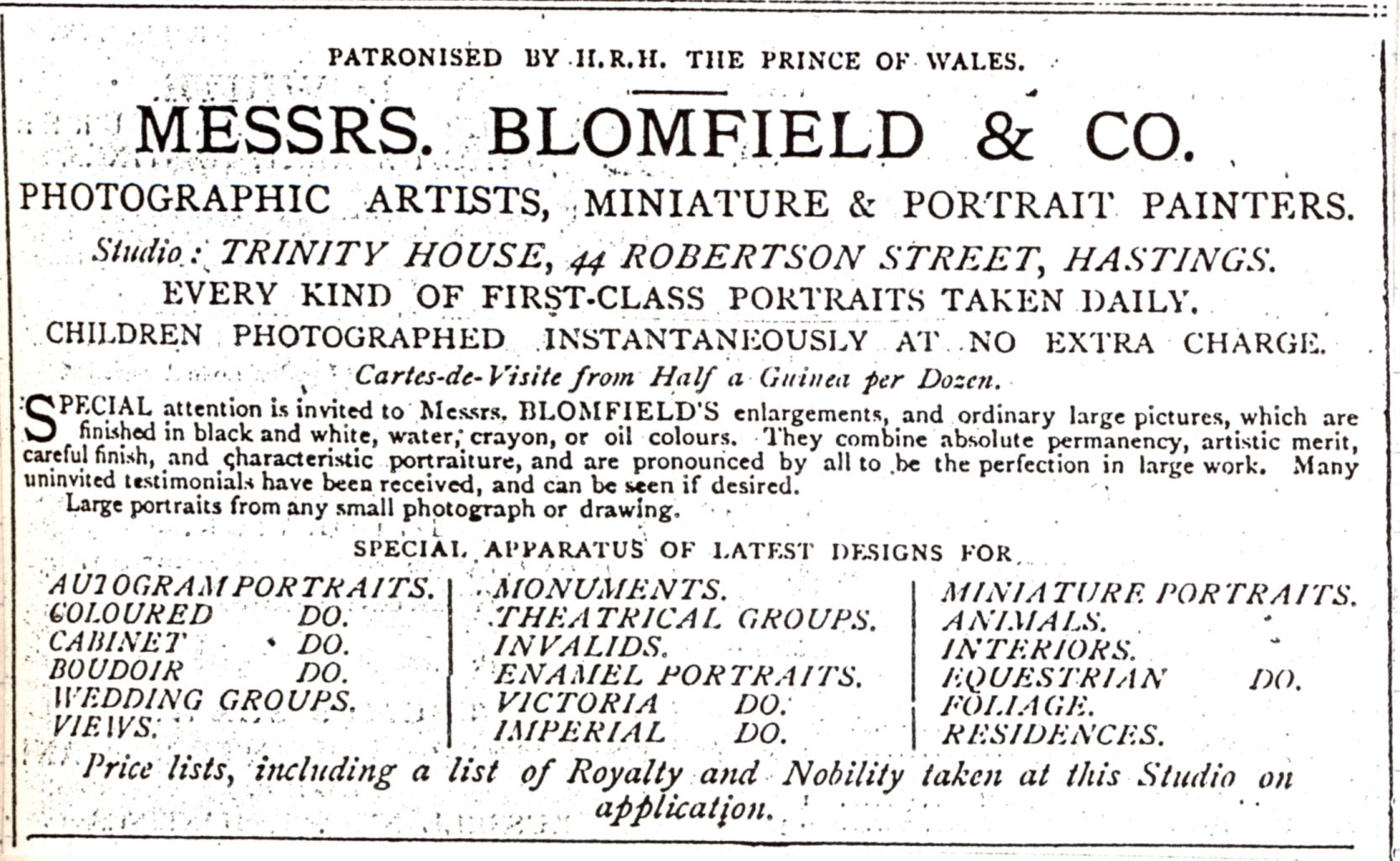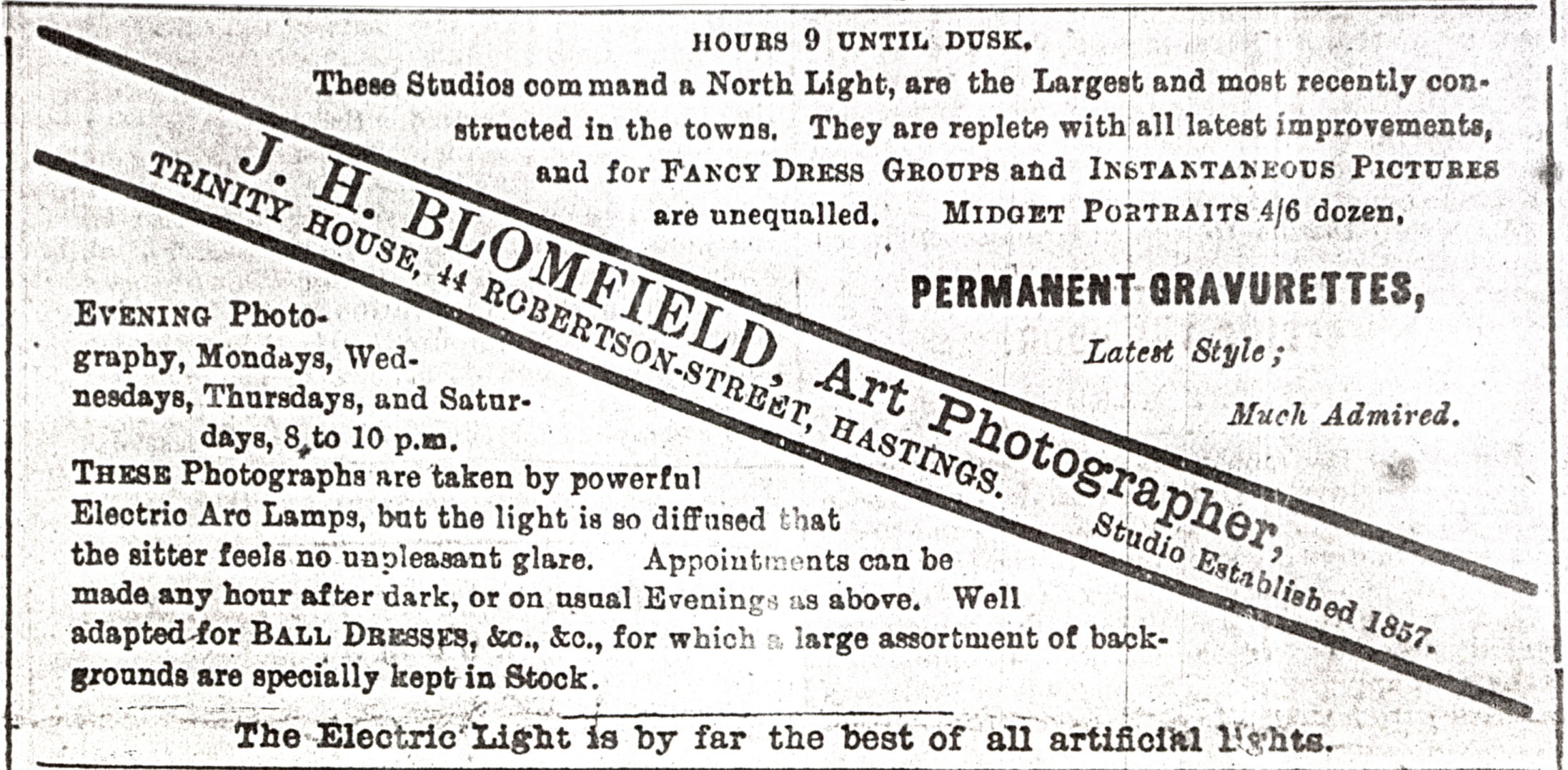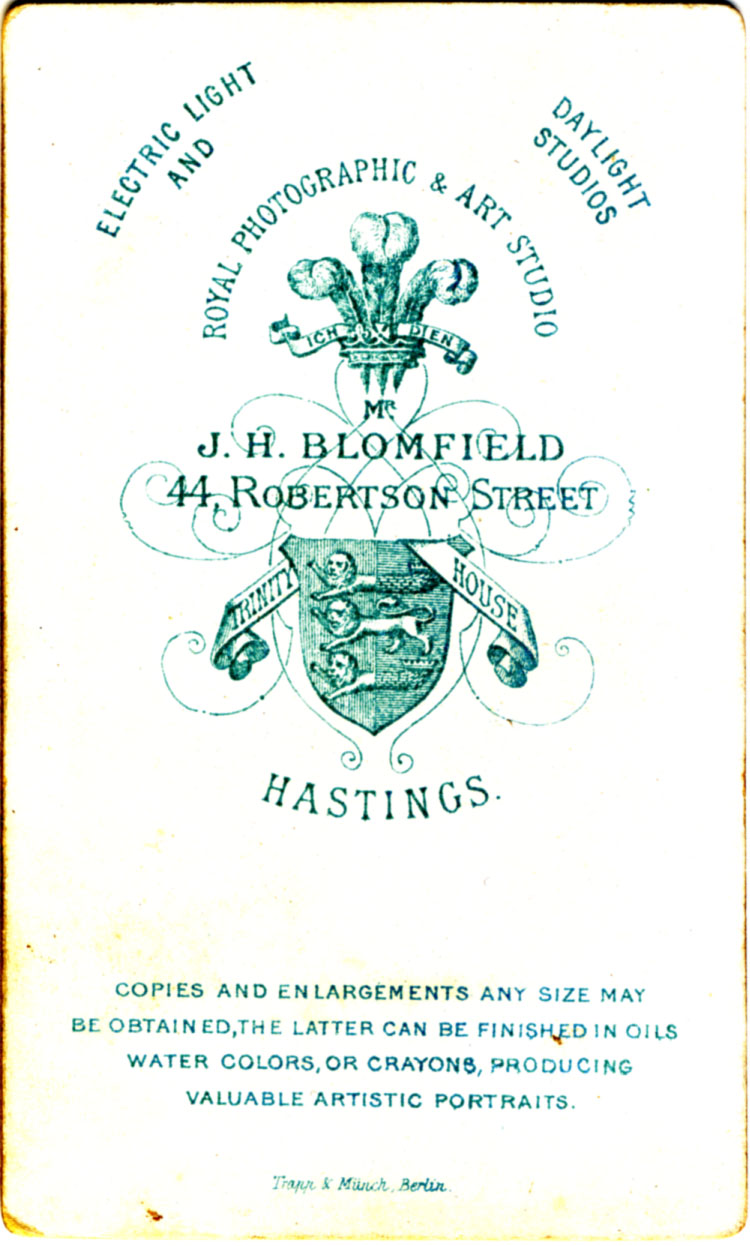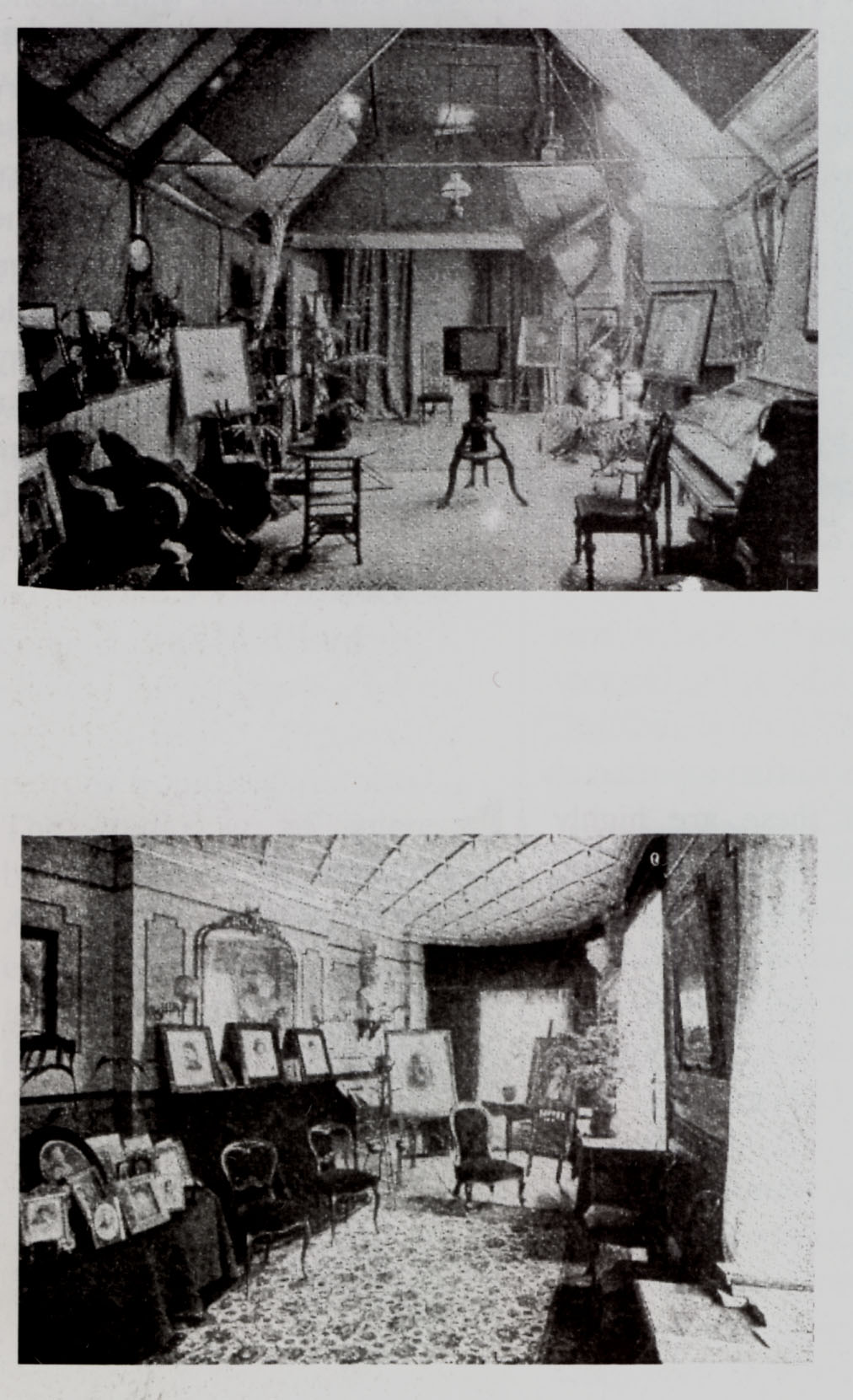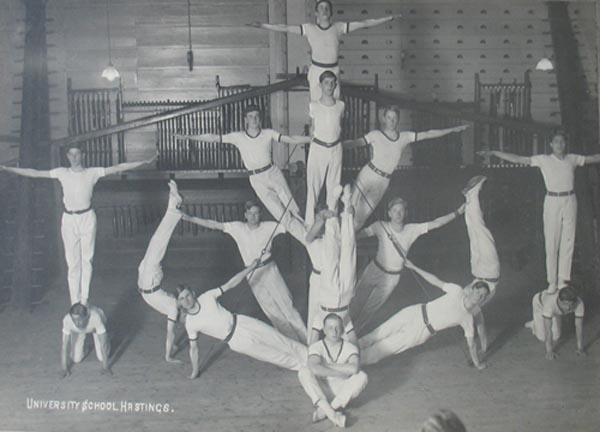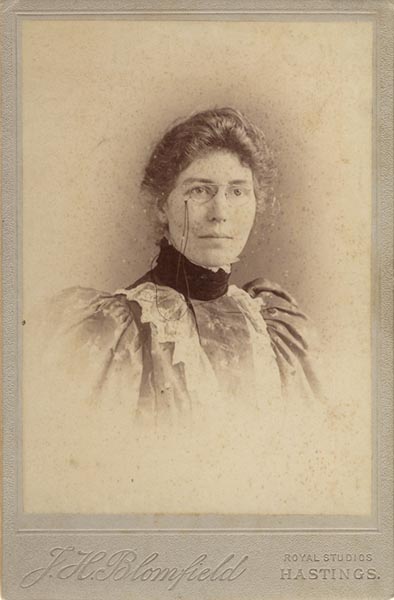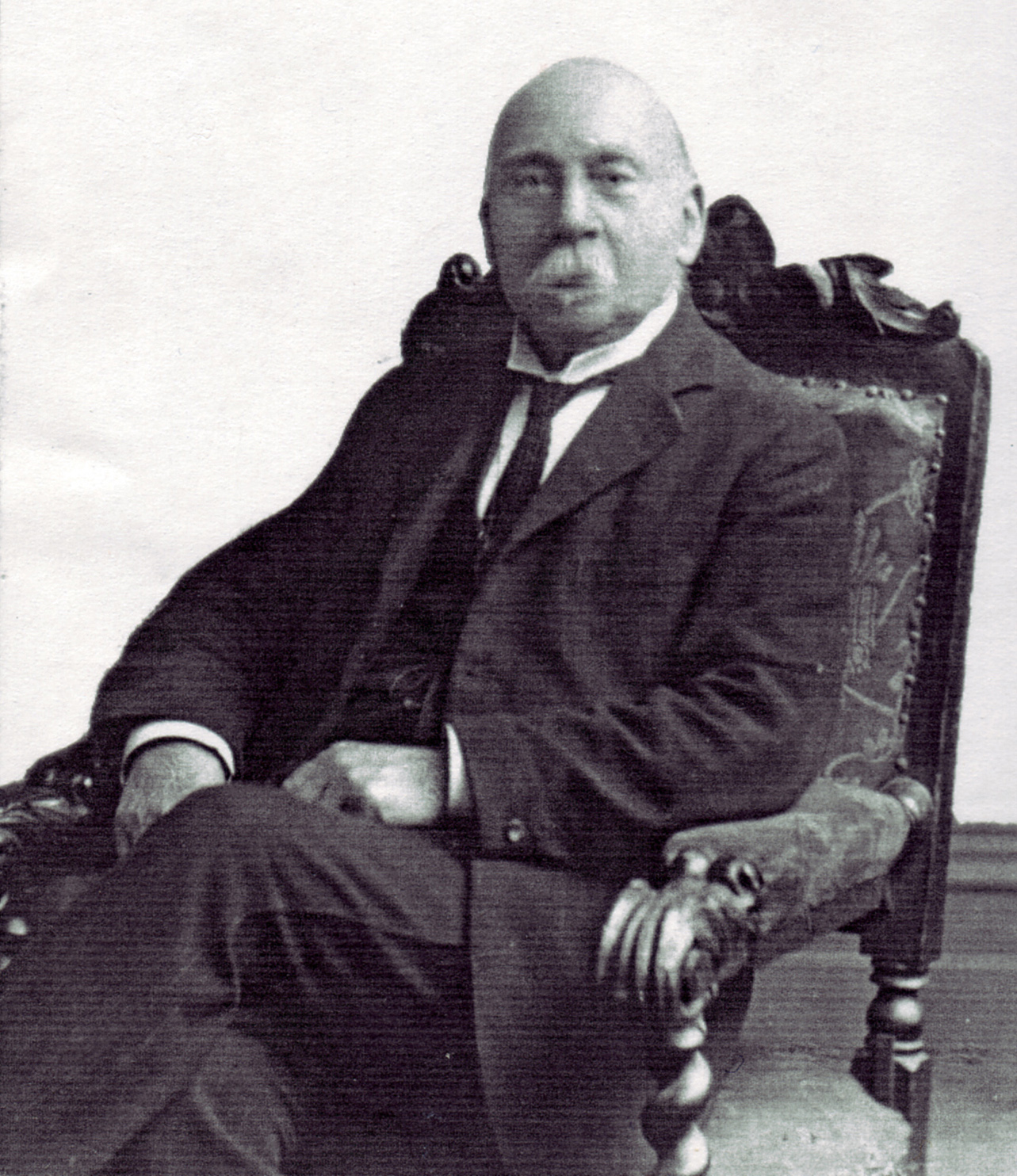|
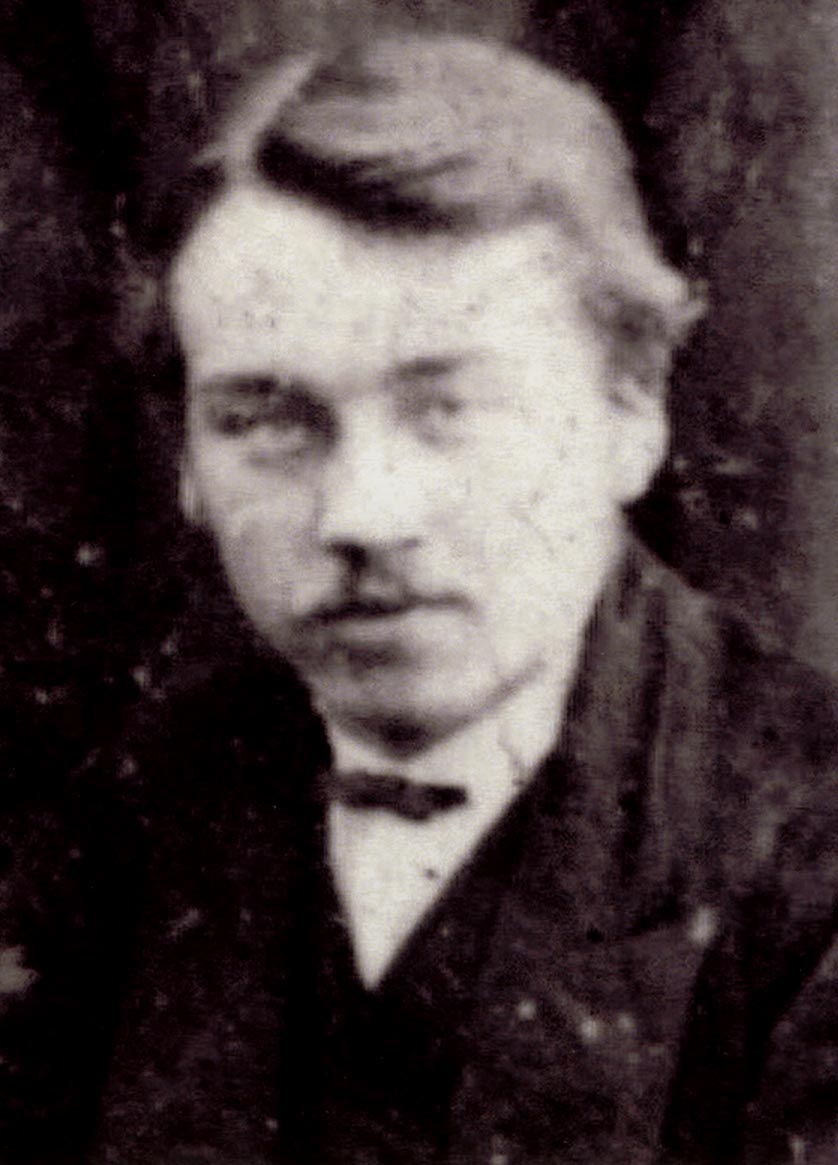
[ABOVE] A portrait of John Henry Blomfield (1850-1928), a detail from a
family group photograph taken in 1868, when John was eighteen
years of age.
[PHOTO: Courtesy of
Edward Archer]

[ABOVE] A report on the death of John Henry Blomfield junior (1884-1898)
which appeared in The Sussex Express on 25th June 1898.
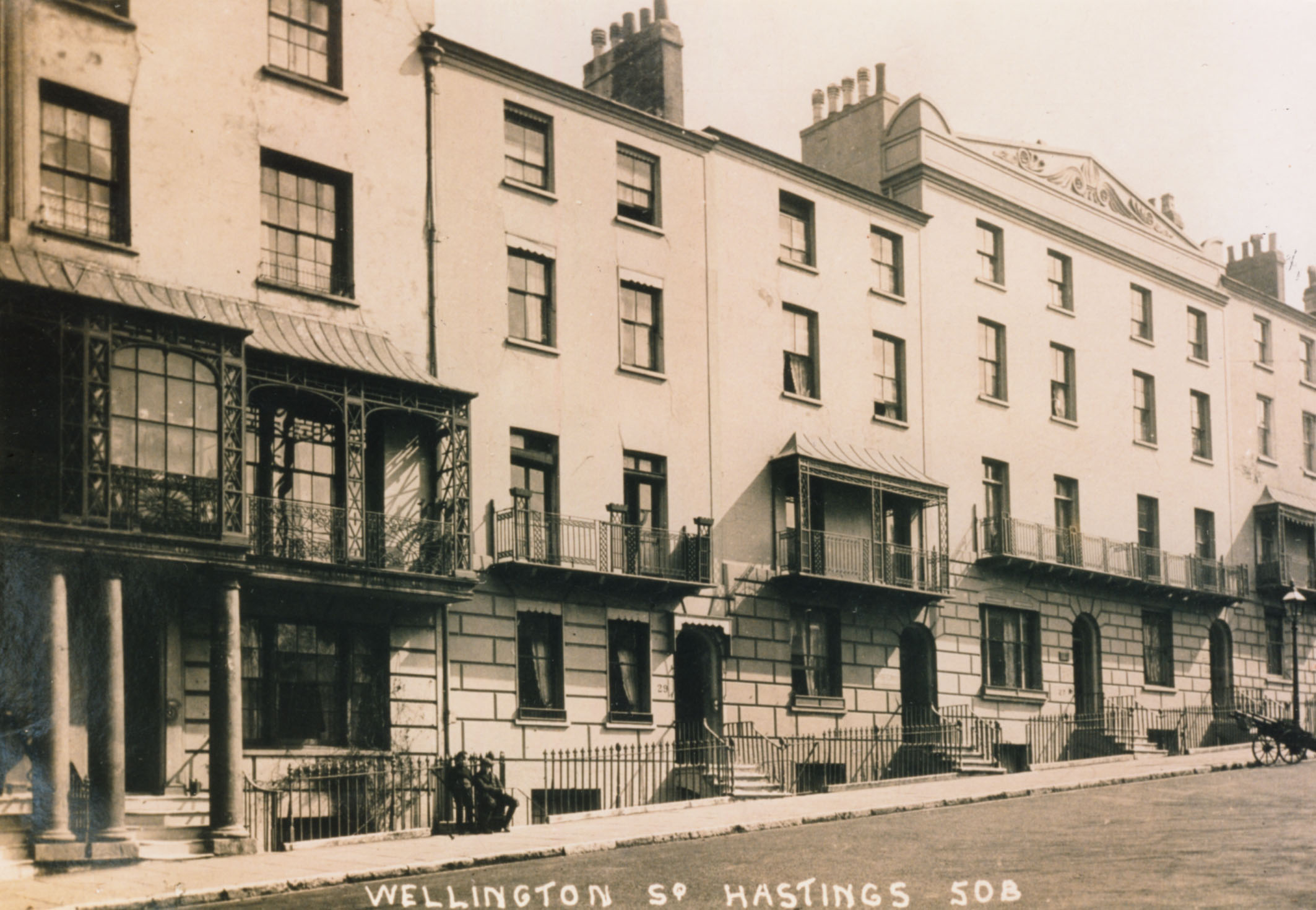
[ABOVE] A view of Wellington Square, Hastings (c1910). John Blomfield
and his family resided at No 41 Wellington Square from around 1899 to
1907. [PHOTO: Courtesy of
Edward Fraser] |
John Henry Blomfield was the
second eldest surviving son of Henry and Elizabeth Blomfield of
Hastings. John Henry Blomfield was born at New Romney, Kent on 14th
April 1850. At the
time of John's birth, his father, the Reverend Henry Blomfield was
working as a Baptist Minister in New Romney. At the age of five, John
Blomfield came with his family to live in Ore, Hastings, where his
parents established a Boarding & Day School.
John Blomfield was keenly interested in
photography and at the age of seventeen he combined forces with his
older brother, William Knibb Blomfield (see above), to form the
photography firm of Messrs W. & J. Blomfield. In 1867, the
brothers purchased the photographic studio of Ayles & Bonniwell
at Trinity House, Robertson Street, Hastings. The brothers used
their funds to make alterations and improvements to the studio, yet 3
years later they let out the studio to Eyres & Co, a firm
of photographers headed by Edmund James Eyres
(c1833-1910).
John Blomfield continued to work as a
professional photographer, but he was now based at 6 Shornden Villas,
Bohemia Road, St Leonards, the family home. John Blomfield spent
much of his time travelling around the county carrying out commissions
and photographing views of the landscape and buildings of interest. The
1871 census records the twenty year old "Photographic Artist" lodging
with a family in Sedlescombe, a village seven miles north of John
Blomfield's home.
Around 1873, John Blomfield returned to
his former studio at 44 Robertson Street, Hastings. Edmund Eyres
had vacated Trinity House to establish a photographic studio at 21 White
Rock Place. John Blomfield was to be the studio proprietor at 44
Robertson street for the next 55 years.
In 1881, John Blomfield was living with
his brothers and sisters at 1 Magdalen Terrace, Hastings ( a row of
houses along Bohemia Road which were demolished around 1971). John
Blomfield is entered on the 1881 census return as 'Head of Household' as
both of his parents were away visiting friends ( Elizabeth Blomfield was
in Rickmansworth, Hertfordshire and Henry Blomfield was staying with
William Hawkes, an "Army Scripture Reader", in Hougham, Kent ). John
Blomfield is recorded on the census return as an unmarried "Artist
Photographer", aged 30.
In 1882, John Henry Blomfield married
Mary Elizabeth Grace Hoffmann (born c1859, Carlow, Co. Down, Ireland).
Mary Hoffmann was the grand-daughter of Mrs Mary Browne, an army
officer's widow, who was a neighbour of the Blomfield family. In 1881,
Mrs Browne and her daughters were living at 4 Magdalen Terrace, St
Leonards, just a few doors away from the Blomfield family. In the 1881
census return, Mary Hoffman (Hoffmann) is described as a twenty-two year
old "Docker's daughter", but this may have been a transcription error,
given that her mother's sister was married to a clergyman and her
grandmother's husband had been an army officer. John Henry Blomfield and
Mary Hoffmann were married in London in 1882 ( marriage registered in
the Hackney District during the March Quarter of 1882). John Blomfield
was thirty-one years old at the time of his marriage. According to the
details in the 1881 census return, Mary Hoffmann would have been around
twenty-three when she wed John, but other sources indicate she might
have been only eighteen or nineteen years of age.
John and Mary Blomfield's first child,
William Arthur Blomfield was born in 1883 [birth registered in the
Hastings district during the March Quarter of 1883]. A second boy,
John ('Jack') Henry Blomfield was born the following year [birth
registered in the Hastings district during the December Quarter of 1884].
The couple's third son,
Edwin Hoffmann Blomfield was born towards
the end of 1886 [birth registered in the Hastings district during the
December Quarter of 1886]. The three sons were followed by three
daughters - Gladys (Gwladys) Muriel Blomfield
[birth registered in the
Hastings district during the March Quarter of 1888],
Mary Barbara
Blomfield [birth registered in the Hastings district during the
March Quarter of 1890], and Elizabeth Eldridge Blomfield [birth
registered in the Hastings district during the March Quarter of 1894].
William and Mary's youngest son, George Peter Blomfield was born
around 1896.
John and Mary Blomfield set up home at
43 Cornwallis Terrace, Hastings. John Blomfield, his wife Mary and
their five children are recorded at this address in the 1891 census.
John H. Blomfield is described in the census return as a "Photographic
Artist", aged 40.
By 1899, John Blomfield and his family
had moved to 41 Wellington Square, Hastings. In the space of two
years, John and Mary Blomfield had lost two children. In June 1898,
their second eldest son, John Henry Blomfield junior, affectionately known as
'Jack', was killed by a cricket ball in a freak accident. Jack, who was
only 13, was hit in the chest by the cricket ball while batting during
cricket practice and the impact caused his heart to stop. Early in the
following year, John Blomfield's youngest daughter
Elizabeth Blomfield (known as 'Bessie'), died at the age
of four [death registered in Hastings during the March Quarter of 1899].
By 1901, John Blomfield's eldest child, William Arthur Blomfield,
had left the family home ( William Arthur Blomfield married in 1910). The 1901 census return records John and
Mary Blomfield at 41 Wellington Square, Hastings. Four children are listed - Edwin
(aged 14), Gladys [Gwladys] (aged 13), Mary Barbara (aged 12) and George, who was
only 5 years of age. John H. Blomfield is described on the census return
as an "Artist Photographer (Employer)", aged 51.
John Henry Blomfield continued in business
as a photographer at 44 Robertson Street, Hastings until April 1928, when he
retired due to ill-health. John Henry Blomfield died at his home at
Clarence Villa, 124 Old London Road on Sunday, 26th August 1928,
aged 78.
|
